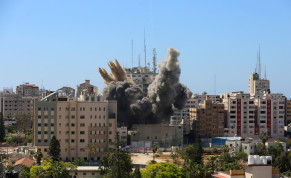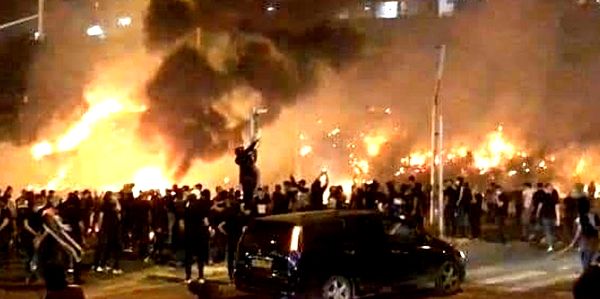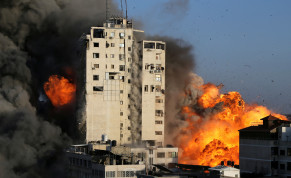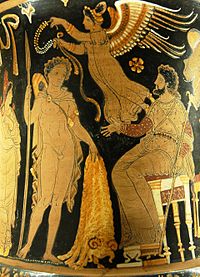On the Mediterranean Sea, a paradise, most people would die to live there, but those who die there actually live to die there. Demographics from various sources put the population pre 1944 at 100,000. Subsequent to the State of Israel being declared an exodus took place. As much as 250,000 moved into Gaza. The current Gaza population is estimated at two million being the result of a high birth rate. The Gaza birth rate is 28 per thousand compared to a U.S. birth rate of 12 per thousand.
Gaza first appears in the Tanach as a Philistine city, the site of Samson’s dramatic death. Jews finally conquered it in the Hasmonean era, and continued to live there. Notable residents include Dunash Ibn Labrat, and Nathan of Gaza, advisor to false messiah Shabtai Zvi. Gaza is within the boundaries of Shevet Yehuda in Biblical Israel (see Genesis 15, Joshua 15:47, Kings 15:47 and Judges 1:18) and therefore some have argued that there is a Halachic requirement to live in this land. The earliest settlement of the area is by Avraham and Yitzhak, both of whom lived in the Gerar area of Gaza. In the fourth century Gaza was the primary Jewish port of Israel for international trade and commerce.
Great medieval rabbis such as Rabbi Yisrael Najara, author of Kah Ribon Olam, the popular Shabbat song, and renowned Mekubal Rabbi Avraham Azoulai, were rabbanim in Gaza Jewish communities.
The periodic removal of Jews from Gaza goes back at least to the Romans in 61 CE, followed much later by the Crusaders, Napoleon, the Ottoman Turks, the British and the contemporary Egyptians. However, Jews definitely lived in Gaza throughout the centuries, with a stronger presence in the nineteenth and early twentieth centuries.
Jews were present in Gaza until 1929, when they were forced to leave the area due to violent riots against them by the Arabs. Following these riots, and the death of nearly 135 Jews in all, the British prohibited Jews from living in Gaza to quell tension and appease the Arabs. Some Jews returned, however, and, in 1946, kibbutz Kfar Darom was established to prevent the British from separating the Negev from the Jewish state.
The United Nations 1947 partition plan allotted the coastal strip from Yavneh to Rafiah on the Egyptian border to be an Arab state. In Israel’s war for independence, most Arab inhabitants in this region fled or were expelled, settling around Gaza City. Israeli forces conquered Gaza, and proceeded south to El-Arish, but subsequently gave control of the area to Egypt in negotiations, keeping Ashdod and Ashkelon. In 1956, Israel went to war with Egypt, conquered Gaza again, only to return it again.
With the 1967 Six Day War, Israeli forces reentered Gaza and captured it. During the war, Israel had no idea what it would do with the territory. Eshkol called it “a bone stuck in our throats.”1
Inhabited since at least the 15th century B.C., the Gaza Strip has been dominated by many different peoples and empires throughout its history; it was incorporated into the Ottoman Empire in the early 16th century. The Gaza Strip fell to British forces during World War I, becoming a part of the British Mandate of Palestine. Following the 1948 Arab-Israeli War, Egypt administered the newly formed Gaza Strip; Israel captured it in the Six-Day War in 1967. Under a series of agreements known as the Oslo accords signed between 1993 and 1999, Israel transferred to the newly-created Palestinian Authority (PA) security and civilian responsibility for many Palestinian-populated areas of the Gaza Strip as well as the West Bank. In 2000, a violent intifada or uprising began, and in 2001 negotiations to determine the permanent status of the West bank and Gaza Strip stalled. Subsequent attempts to re-start negotiations have not resulted in progress toward determining final status of the Israeli-Palestinian conflict.
Israel by late 2005 unilaterally withdrew all of its settlers and soldiers and dismantled its military facilities in the Gaza Strip, but it continues to control the Gaza Strip’s land and maritime borders and airspace. In early 2006, the Islamic Resistance Movement (HAMAS) won a majority in the Palestinian Legislative Council election. Attempts to form a unity government between Fatah, the dominant Palestinian political faction in the West Bank, and HAMAS failed, leading to violent clashes between their respective supporters and HAMAS’s violent seizure of all military and governmental institutions in the Gaza Strip in June 2007. Since HAMAS’s takeover, Israel and Egypt have enforced tight restrictions on movement and access of goods and individuals into and out of the territory. Fatah and HAMAS have since reached a series of agreements aimed at restoring political unity between the Gaza Strip and the West Bank but have struggled to enact them; a reconciliation agreement signed in October 2017 remains unimplemented.
In July 2014, HAMAS and other Gaza-based militant groups engaged in a 51-day conflict with Israel culminating in late August with an open-ended truce. Since 2014, Palestinian militants and the Israel Defense Forces have exchanged projectiles and air strikes respectively, sometimes lasting multiple days and resulting in multiple deaths on both sides. Egypt, Qatar, and the UN Special Coordinator for the Middle East Peace Process have negotiated multiple ceasefires to avert a broader conflict. Since March 2018, HAMAS has coordinated weekly demonstrations along the Gaza security fence, many of which have turned violent, resulting in one Israeli soldier death and several Israeli soldier injuries as well as more than 200 Palestinian deaths and thousands of injuries.
Hamas, a designated terrorist organization by the United States, has only one objective, to eliminate Israel from the map. No matter what it takes, even the killing of their brothers and sisters, called peripheral damage, they will continue their fight until their objective is met.















 By
By 











